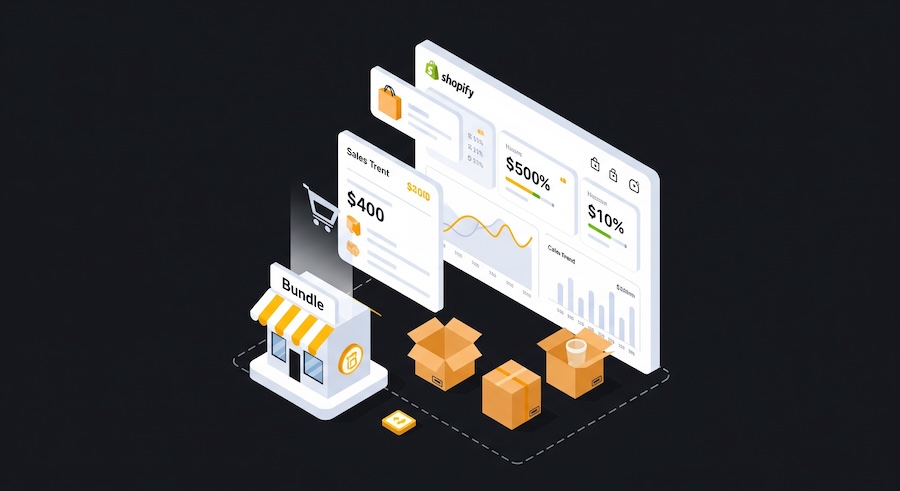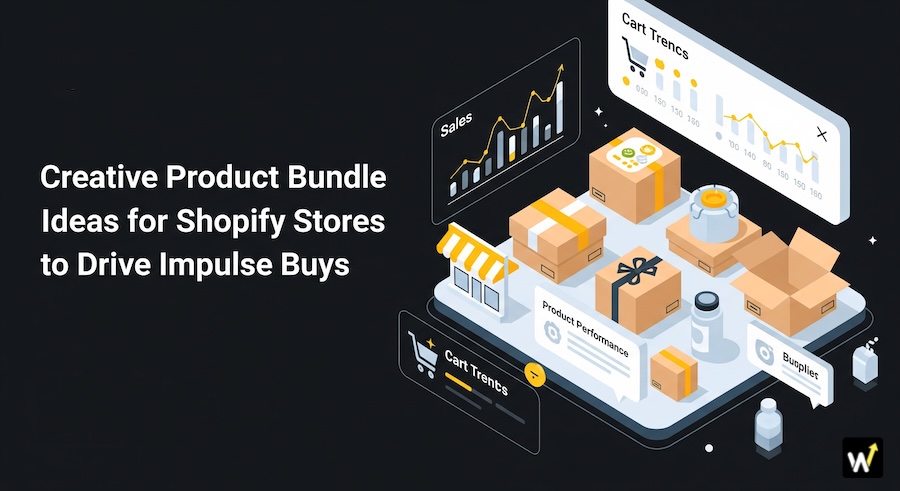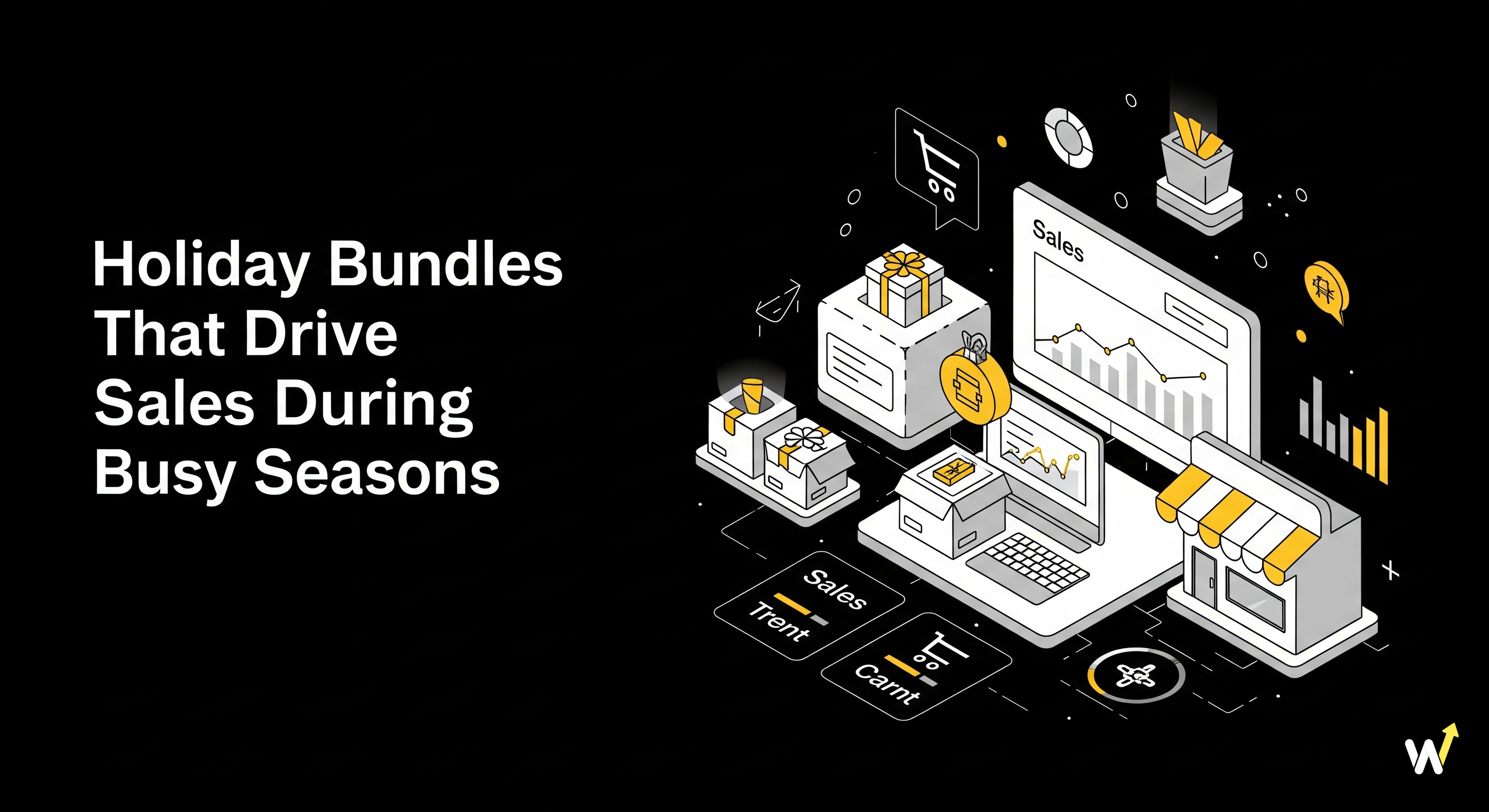Running a successful Shopify store comes with its own set of challenges, especially when it comes to implementing effective SEO strategies for product bundles. As a Shopify store owner, you understand the importance of optimizing your website for search engines to increase visibility and drive organic traffic. However, navigating the world of SEO can be daunting, especially when it comes to product bundling.
Product bundling is one of the smartest strategies for Shopify store owners. By grouping related products together—like a “skincare kit” or “buy 2, get 1 free” deal—you can increase average order value, encourage upselling, and create a better shopping experience.
But there’s a catch: bundled products often face SEO challenges. Since most bundles aren’t default Shopify features, they rely on third-party apps or custom setups, which can create issues with duplicate content, poor indexing, or missed keyword opportunities.
If your bundles aren’t ranking in search results, you’re leaving money on the table. In this article, we’ll break down the top SEO challenges with Shopify product bundles and show you how to overcome them with practical, easy-to-follow solutions.
Common Challenges with Shopify Product Bundles
Challenge 1: Duplicate Content Issues
The problem:
Many Shopify bundle apps create new product pages that copy content from your original product listings. Search engines like Google see this as duplicate content, which can harm your SEO rankings. Instead of boosting your visibility, bundles may compete with your existing product pages.
How to fix it:
- Write unique descriptions – Instead of reusing the same text, craft a fresh description for the bundle. Highlight the value of buying the set together and explain how the products complement each other.
- Use canonical tags – Add canonical URLs to tell Google which page is the “main” version. This prevents your bundle pages from being flagged as duplicates.
- Focus on benefits, not repetition – For example, instead of repeating individual product features, explain how they work better together as a bundle.
Example: Instead of writing “Moisturizer hydrates skin” again, say: “This skincare kit combines a cleanser and moisturizer to give you smoother, hydrated skin in one simple routine.”
Challenge 2: Weak Keyword Targeting
The problem:
Most bundle pages are created without proper keyword optimization. If you’re only using generic titles like “Bundle Pack” or “Combo Deal,” search engines won’t understand what you’re selling. As a result, your bundles won’t appear in search results where customers are actually looking.
How to fix it:
- Research bundle-specific keywords – Look for terms like “skincare kit,” “coffee gift set,” or “fitness bundle.” Tools like Google Keyword Planner or Ubersuggest can help.
- Add descriptive titles – Instead of “Bundle #1,” use “Organic Coffee Beans Gift Bundle – 3 Pack.” This makes it SEO-friendly and more clickable.
- Optimize meta descriptions – Write clear, keyword-rich descriptions that explain what’s inside the bundle and why it’s valuable.
Tip: Include long-tail keywords like “Shopify skincare bundle for dry skin”—these attract targeted customers who are ready to buy. Make your Shopify Bundles Stand out with Better Descriptions
Challenge 3: Poor Internal Linking
The problem:
Bundle pages often get buried deep in your store’s structure with little to no internal links. If Google bots can’t easily find them, they won’t get indexed properly. Plus, customers may not even discover them while browsing your store.
How to fix it:
- Feature bundles on category pages – Add bundle links to your main product categories so they’re more visible.
- Cross-link products – On individual product pages, suggest relevant bundles under a section like “Save more with this bundle.”
- Use blog content – Write blogs like “Best Gift Bundles for Coffee Lovers” and link to your bundle pages naturally.
This not only improves SEO but also helps customers discover your bundles more easily.
Challenge 4: Thin Content Pages
The problem:
Some bundle pages only include a title and product list, with little to no additional content. Google considers these “thin content” pages, which rarely rank well in search results.
How to fix it:
- Expand descriptions – Write at least 200–300 words for each bundle page. Explain what’s included, who it’s for, and why it’s valuable.
- Add FAQs – Include simple FAQs like “Can I customize this bundle?” or “Is this bundle gift-ready?” This boosts SEO while answering customer questions.
- Use multimedia – Add product images, lifestyle photos, or even short videos showing the bundle in use. This makes the page more engaging and SEO-friendly.
Example: If selling a fitness bundle, include a short video showing someone using the yoga mat, resistance bands, and water bottle together.
Challenge 5: Limited Indexing From Apps
The problem:
Many third-party Shopify apps that create bundle pages don’t properly integrate with your sitemap. That means Google may not index them at all, leaving your bundles invisible to search engines.
How to fix it:
- Manually submit bundle URLs – Use Google Search Console to request indexing for new bundle pages.
- Check your sitemap – Ensure your bundle URLs are included. Some apps allow you to manually add them.
- Choose SEO-friendly apps – When selecting a bundling app, make sure it allows customization of titles, meta tags, and URLs.
This small step can make a huge difference in how quickly your bundle pages appear in search results.
Challenge 6: Tracking Conversions and Performance
The problem:
Without proper tracking, it’s hard to know whether bundle pages are actually driving sales. Many store owners optimize for SEO but never measure results, missing out on opportunities to improve.
How to fix it:
- Set up Google Analytics – Track page views, bounce rates, and conversions from your bundle pages.
- Monitor keywords – Use tools like Ahrefs or SEMrush to see which bundle pages rank and for what keywords.
- Test variations – Try different titles, CTAs, or pricing strategies to see which version performs better.
Introducing the Wizio Bundle: Quantity Breaks App
The Wizio Bundle: Quantity Breaks App makes product bundling on Shopify simple and code-free. You can easily set up quantity breaks, BOGO deals, upsells, and even run A/B tests to optimize results. With built-in subscription support, it also helps drive recurring revenue.
To enhance the shopping experience, Wizio includes AI-powered cart recommendations, free shipping progress bars, gift wrap, and shipping protection. From “frequently bought together” bundles to build-your-own box options, it offers a flexible, all-in-one solution for boosting sales.
Conclusion
Shopify product bundles can be a powerful way to increase sales—but only if they’re optimized for SEO. From duplicate content to poor indexing, bundles come with unique challenges that can hurt visibility if ignored.
The good news? Each challenge has a practical solution. By writing unique content, targeting bundle-specific keywords, improving internal linking, and monitoring performance, you can make your bundles more discoverable and profitable.
Remember: SEO isn’t just about ranking higher—it’s about creating a better shopping experience for your customers. Optimize your bundles the right way, and you’ll not only climb search results but also keep customers coming back for more.
Also read: Shopify Discount Management made Easy
Frequently Asked Questions
1. How can product bundles improve my store’s SEO?
Ans: If done right, bundles increase keyword coverage, enhance user experience, and drive more organic traffic.
2. Can I use apps to fix SEO issues with bundles?
Ans: Yes, SEO-friendly apps and tools can help with structured data, meta tags, and page performance for bundle pages.
3. What is the best way to optimize product bundle pages?
Ans: Add unique titles, clear descriptions, keyword-rich copy, and high-quality images to make bundle pages stand out.
4. Why do Shopify product bundles face SEO challenges?
Ans: Because bundles often create duplicate content, indexing issues, or thin product pages that confuse search engines.
5. Is Wizio App's setup user-friendly?
Ans: Yes, Wizio App boasts a user-friendly setup with no coding required, making it accessible to Shopify store owners of all skill levels. You can start creating compelling product bundles in no time.




